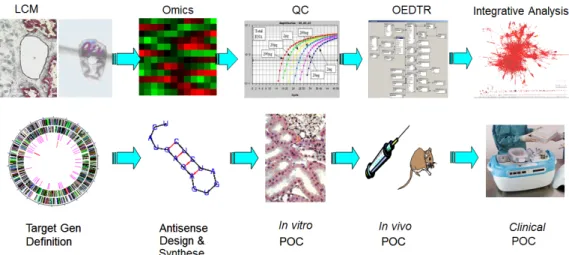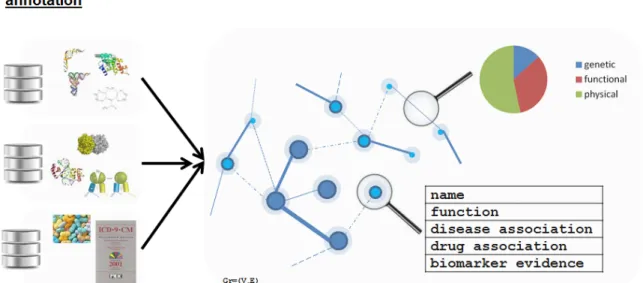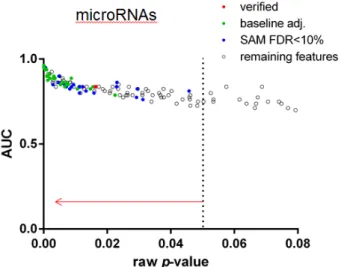INJURY
PhD thesis
Rainer Oberbauer
Doctoral School of Clinical Medicine Semmelweis University
Consultant: Attila Szabó, M.D., DSc.
Official reviewers: Attila Tordai M.D., DSc.
Balázs Antus MD., DSc.
Head of the Final Examination Committee:
Zoltán Szabolcs M.D., Ph.D.
Members of the Final Examination Committee:
Ferenc Rényi-Vámos M.D., Ph.D.
Zsolt Csapó M.D., Ph.D.
Budapest, 2016
1
1. Introduction
Kidney transplantation is clearly the preferred treatment of end stage kidney disease since it allows for a nearly normal life quality and is in the long run considerably cheaper than maintenance dialysis. National and international data unambiguously show that great success have been achieved over the last years in prolonging patient and graft survival after kidney transplantation. However most of the improvement can be attributed to the increased one year graft function due to better pre-transplant risk evaluation such risk stratification by preformed anti-donor HLA antibodies (DSAs or donor specific antibodies), technical planning of the surgical procedure in live donor transplantation, postoperative care and improved immunosuppressive regimen.
However, the incidence of post-transplantation acute renal failure (ARF), the one early clinical condition with the strongest negative impact on survival, remained virtually unchanged over the years. ARF eventually resolves after some days but delayed allograft function (DGF) affects roughly 25% of all recipients of deceased donor transplants but virtually never in live donor transplants. This highly prevalent condition in deceased donor transplantation represents the main risk factor for a reduced allograft survival. Studies showed that kidney transplants with DGF have a more than doubled risk for graft loss compared to matched transplants with primary or immediate graft function. These facts clearly show that there is an urgent need for improvement.
2. Objectives
The main goal of the PhD studies was to elucidate the molecular pathways and subsequent clinical predictors of ARF/DGF in experimental and clinical studies. Furthermore, the causal inference of the findings should be tested in a RCT of renal allograft recipients and thus allowing for novel clinical management strategies of such patients.
2
3. Methods
Work Plan
Extensive in vitro and in vivo experiments of ARF/DGF as well as clinical RCTs were performed in the context of this thesis. A schematic overview of this work plan is illustrated in figure 1.
Figure 1. Work plan for the study of ARF experimentally and in the human post-transplant setting (LCM … laser capture microdissection; QC … quality control; OEDTR … Österreichisches Dialyse and Transplant Registry; POC … proof of concept)
To assess the associations of morphologic and molecular features in the human deceased donor kidneys, pre-implantation biopsies were obtained in large amounts in order to have a sufficient number of outcomes, i.e. cases of ARF, which occur in roughly 25% of deceased donor kidney transplants. A collaboration with the Semmelweis University Clinic in Budapest was initiated since in this excellent transplant center roughly 200 kidney transplants are performed annually. Together with the Medical University of Vienna and the Elisabethinen hospital in Linz, we had access to over 400 renal transplants per year. The post-transplant course was monitored and recorded into a web-based database.
Materials & Techniques
A detailed description of all methodological utilized in this research may be found at the applicants website http://www.meduniwien.ac.at/nephrogene under ‘protocols’.
3
In brief, the following techniques were used in the research projects:
• Affymetrix mRNA and miRNA arrays
• cDNA Arrays
• Cell culture
• ELISA
• Immunohistochemistry
• Peptide Arrays
• Protein concentration
• qRT - PCR
• Western blotting
A detailed description of the animal experiments may be found at the respective sections of this paper.
Systems Biology
The integrative analyses using a systems biology approach was carried out in collaboration with Bernd Mayer and coworkers from emergentec (www.emergenetc.com). Emergentec has developed an in silico network of molecular processes and interactions between protein coding features derived from various omics tracks and published literature that mirror the physiological dependencies. The annotated relations network holds 18,000 vertices, 800,000 edges on which the expression profiles of the donor kidneys are superimposed (figure 2).
Figure 2. Schematic representation of the molecular network ‘omicsNET’
4 Discovery and Validation Studies
After the transcriptomics studies, cDNA and miRNA arrays were conducted on the same biopsies in a novel prospective cohort of renal allograft recipients with the aim to uncover the complex molecular regulation of ARF in further depth. The sample size of 122 donors were chosen to obtain roughly the same representative numbers of ARF and BCAR follow up biopsies in the first week and a half after transplantation. Ten protocol biopsies without ARF and BACR were taken in the same period and served as control tissue.
4. Results
ARF Specific Molecular Network
Based on the available omics profiles an ARF specific network was defined and subsequently superimposed on the omicsNET and segmented. The significant features and dependencies/interactions between the nodes are displayed in figure 3. Most of the differentially regulated features in the ARF kidneys belong to the gene ontologies of inflammation, immunity and host defence, some were transcription factors.
Figure 3. Inflammation network in donor kidneys which subsequently developed post- transplant ARF. The colour code refers to the gene ontologies of the individual features.
The interpretation of the transcriptomics findings is unambiguously that inflammation in the kidneys occurs in the deceased donor before the organs are harvested.
The observed inflammatory signals in the donor kidneys with post-transplant ARF however were derived from observational studies and thus can only be considered as associational finding. The proof of causality of inflammation as determinant of ARF thus could only be conducted in an interventional study. Therefore, we designed and conducted a RCT to test whether the treatment of inflammation in the donor causes a reduction of the incidence of
5
post-transplant ARF/DGF. DGF is the primary endpoint was defined as the need for more than one post-transplant dialysis. A finer resolution of the potential effect was the duration of DGF and the number of dialysis session required.
In this blinded multicentre trial 207 deceased donors were randomized to 1000mg of methylprednislon or placebo single shot injection three to six hours before the organ retrieval.
Preimplantation biopsies were obtained to test whether the randomization, timing and dose of the intervention (1000mg methylprednislon) was appropriately chosen to reduce the inflammation cascade on a genome wide level in the kidneys. The biopsies were subjected to microarray testing and the post-transplant course was monitored.
The CONSORT flow chart (http://www.consort-statement.org/) of the conducted study is illustrated in.
The transcriptomics experiments on randomly selected 20 biopsies, 10 of each intervention group (steroid/placebo) were conducted on cDNA microarrays holding 41,421 features (batch SHEO) from the Stanford University Functional Genomics core facility. The steroid pre- treatment of the donors led to a reduction of many features of the inflammation cascades and activation of metabolism genes. Based on these data we were confident that the coordination, timing, dosing and intervention of this blinded and logistically challenging worked fine.
Despite the global suppression of inflammation in the donor organs by steroid treatment, the incidence of DGF was 22 and 25% respectively and thus not different between groups.
Accordingly, the resolution of DGF as indicated by creatinine trajectories remained unchanged after donor steroid treatment (figure 4).
Figure 4. Trajectories of post-transplant creatinine by randomization group. The p-value refers to the F-test in the mixed linear model for longitudinal data.
6
Effect of Steroid Donor Treatment on other Transplanted Organs
Steroid pre-treatment did not effect on the incidence of rejections or mortality. Furthermore, the trajectories of the transaminases showed no impact in the degree of peri-transplant liver injury by steroid pre-treatment.
The miRNA Discoveries
Since it became clear that the suppression of inflammation in the donor organs was not sufficient to change the early outcomes ARF/DGF after engraftment, novel approaches were investigated assuming that other contributors than inflammation were causally responsible for initiation and maintenance of ARF leading to DGF after transplantation. In order to cover a wider range of regulatory target pathways than steroid treatment could accomplish, the microRNA (miRNA) expression in the organs at risk of ARF were determined.
A recent summary of the genesis of miRNA, their contribution to pathologies in the transplant kidney as well as potential therapeutic applications may be found in the review by J.
Wilflingseder et al.
The simultaneous analysis of mRNA and miRNA transcripts in the ARF compared to protocol biopsies yielded several features that remained statistically significant after adjustment for multiple testing using the SAM false discovery rate <10% penalization. The significant features of both analyses in aggregate form are displayed in figure 5.
Figure 5. Molecular features discriminating DGF from primary graft kidney biopsies according to their p-value of significance.
7
The prediction of miRNA targets was performed by a web-based custom computational algorithm that allows the integration of all available routines and individual adjustment of the significance threshold. This algorithm coined miRway is accessible on my lab-website at http://mirway.nephrogene.at/MirWayFrontend/faces/start.xhtml
We identified miR-182-5p as the best discriminator between DGF and primary patency.
Target candidate proteins were identified and showed many proteins that have been presented to be involved in ARF regulation by cell cycle regulation and repair such as cycle regulators such as PCNA, cdc2, cdk4 or clock and transcription factors such as FOXO3.
Clinical Applicability and Utility
Previous studies showed that small oligonucleotides and siRNAs can exhibit antisense activity in the kidney. Acute renal failure was induced in SD rats by right uninephrectomy and clamping of the left renal artery for 40 minutes. Rats were pretreated 12 hours before insult with either anatgomiR-182 (ASO 2.5 and 25mM) or equal concentrations of mismatched antisense oligonucleotides. Intrarenal expression of miR-182 remained selectively reduced in the antagomiR treated rats.
The trajectories of serum creatinine were determined daily for seven days after the injury.
Histological evaluation of kidney was performed on days two and seven after insult.
AntagomiR-182 (ASO) treatment led to an amelioration of the functional and morphological insult as evidence in figures 6.
Figure 6. Trajectories of serum creatinine over the first seven days after ischemia reperfusion injury in rats. ASO low refers to an anti-miR concentration of 2.5mM or equal concentrations of mismatched control.
8
After investigations from cell culture to whole animal experiments showed that anti-miR-182 selectively inhibited miRNA-182 activity and activation of target proteins as well as amelioration of IRI in the rat models, we proceeded with studies of anti-miR-182 in ex vivo perfused pig kidneys. Freshly harvested pig kidneys were subjected to ex vivo normothermic machine perfusion with UW solution (University of Wisconsin) solution at a pressure of 80mmHg.
Quantitative PCR of the biopsies from the pig kidney showed a selective inhibition of miR- 182 over the perfusion time of six hours.
5. Conclusions
The work of the last decade focused on the molecular pathways of ischemia reperfusion injury in human kidney transplantation. The work plan was carefully designed and experiment meticulously planned. The projects were continuously supported since 1996 by Austrian research grants (FWF) and EU-grants. In summary my research group nephrogene showed that inflammation in the donor organ is highly predictive of DGF after transplantation.
Suppression of this inflammatory process in the donor ameliorated inflammation on a genome wide level but did not change the incidence of DGF. Thus new avenues were chosen to tackle this important enigma. Antisense oligonucleotide constructs against miRNAs were investigated by systems biology approaches and lead identified also experimentally. The top candidate – antagomiR-182 – was able to suppress the target miR selectively also ex - and in vivo and led to inhibition of the suppression of miR-182 target proteins such as Bcl-2 or FOXO-1. This molecular intervention led functionally to a reduced severity of IRI as evidenced by creatinine trajectories in rat models and improved histopathology of the IRI kidneys.
We are confident that the application of our approach to human kidney transplantation is feasible and will lead to a clinical breakthrough in the treatment of acute renal failure in the transplant but eventually also in native kidneys of patients suffering from acute renal failure in the ICU.
9
6. Bibliography of the candidate´s publications
1. Haller M, Gutjahr G, Kramar R, Harnoncourt F, Oberbauer R. (2011) Cost-effectiveness analysis of renal replacement therapy in Austria. Nephrol Dial Transplant. 26(9): 2988- 95.
2. Oberbauer R, Schreiner GF, Biber J, Murer H, Meyer TW. (1996) In vivo suppression of the renal Na+/Pi cotransporter by antisense oligonucleotides. Proc Natl Acad Sci U S A.
93(10): 4903-6.
3. Heinze G, Mitterbauer C, Regele H, Kramar R, Winkelmayer WC, Curhan GC,
Oberbauer R. (2006) Angiotensin-converting enzyme inhibitor or angiotensin II type 1 receptor antagonist therapy is associated with prolonged patient and graft survival after renal transplantation. J Am Soc Nephrol. 17(3): 889-99.
4. Oberbauer R, Schreiner GF, Meyer TW. (1995) Renal uptake of an 18-mer phosphorothioate oligonucleotide. Kidney international. 48(4): 1226-32.
5. Hauser P, Oberbauer R. (2002) Tubular apoptosis in the pathophysiology of renal disease. Wien Klin Wochenschr. 114(15-16): 671-7.
6. Schwarz C, Oberbauer R. (2003) The influence of organ donor factors on early allograft function. Curr Opin Urol. 13(2): 99-104.
7. Schwarz C, Regele H, Steininger R, Hansmann C, Mayer G, Oberbauer R. (2001) The contribution of adhesion molecule expression in donor kidney biopsies to early allograft dysfunction. Transplantation. 71(11): 1666-70.
8. Kainz A, Wilflingseder J, Mitterbauer C, Haller M, Burghuber C, Perco P, Langer RM, Heinze G, Oberbauer R. (2010) Steroid pretreatment of organ donors to prevent
postischemic renal allograft failure: a randomized, controlled trial. Ann Intern Med.
153(4): 222-30.
9. Perco P, Kainz A, Wilflingseder J, Soleiman A, Mayer B, Oberbauer R. (2009)
Histogenomics: association of gene expression patterns with histological parameters in kidney biopsies. Transplantation. 87(2): 290-5.
10. Bernthaler A, Monks K, Muhlberger I, Mayer B, Perco P, Oberbauer R. (2011) Linking molecular feature space and disease terms for the immunosuppressive drug rapamycin.
Mol Biosyst. 7(10): 2863-71.
11. Muhlberger I, Perco P, Fechete R, Mayer B, Oberbauer R. (2009) Biomarkers in renal transplantation ischemia reperfusion injury. Transplantation. 88(3 Suppl): S14-9.
10
12. Amatschek S, Wilflingseder J, Pones M, Kainz A, Bodingbauer M, Muhlbacher F,
Langer RM, Gerlei Z, Oberbauer R. (2012) The effect of steroid pretreatment of deceased organ donors on liver allograft function: a blinded randomized placebo-controlled trial. J Hepatol. 56(6): 1305-9.
13. Wilflingseder J, Reindl-Schwaighofer R, Sunzenauer J, Kainz A, Heinzel A, Mayer B, Oberbauer R. (2014) MicroRNAs in kidney transplantation. Nephrol Dial Transplant.
14. Wilflingseder J, Sunzenauer J, Toronyi E, Heinzel A, Kainz A, Mayer B, Perco P, Telkes G, Langer RM, Oberbauer R. (2014) Molecular pathogenesis of post-transplant acute kidney injury: assessment of whole-genome mRNA and miRNA profiles. PLoS One.
9(8): e104164.
15. Hauser P, Schwarz C, Mitterbauer C, Regele HM, Muhlbacher F, Mayer G, Perco P, Mayer B, Meyer TW, Oberbauer R. (2004) Genome-wide gene-expression patterns of donor kidney biopsies distinguish primary allograft function. Lab Invest. 84(3): 353-61.





